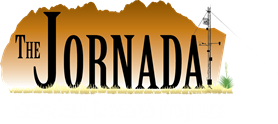| Title | Weighing the costs of different errors when determining statistical significant during monitoring |
| Publication Type | Conference Paper |
| Year of Publication | 2015 |
| Authors | Karl JW, Unnasch RS |
| Conference Name | 68th Annual Society for Range Management Meeting |
| Date Published | 02/2015 |
| Publisher | Sociiety for Range Management |
| Conference Location | Sacramento, CA |
| ARIS Log Number | 321938 |
| Abstract | Selecting appropriate significance levels when constructing confidence intervals and performing statistical analyses with rangeland monitoring data is not a straightforward process. This process is burdened by the conventional selection of “95% confidence” (i.e., Type I error rate, a =0.05) as the default with no consideration as to whether, or in what circumstances, it is appropriate. The value of a =0.05 has its origins in hypothesis testing for scientific research where variation is controllable and the costs of making different errors are farily easily quantifiable. A core belief in scientific research is that the cost of committing a Type I error is much higher than committing a Type II error – i.e., it is better to miss an experimental effect than to erroneously conclude that effect occurred. Yet, when managing rangeland resources, the costs of committing Type I and Type II errors are not the same as in research – and often vary with objective and scale. In many rangeland resource applications making a Type II error (i.e., failing to detect a change) may actually be catastrophic – e.g., failing to detect increases in bare ground cover may lead to continued overgrazing, soil loss and permanently decreased range health. Accordingly, for rangeland monitoring the selection of appropriate error rates should be based on: 1) the relative costs of making the two types of errors associated with statistical tests, and 2) the role the data analysis is to play in making management decisions and committing resources. We present a tiered framework for selecting appropriate error rates for rangeland monitoring designed to be sensitive to detecting change at its broadest level but have high specificity at finer levels depending on the costs of making errors at each of those levels. This approach enables statistical analyses that support proactive rather than reactive decision-making for natural resource management. |


